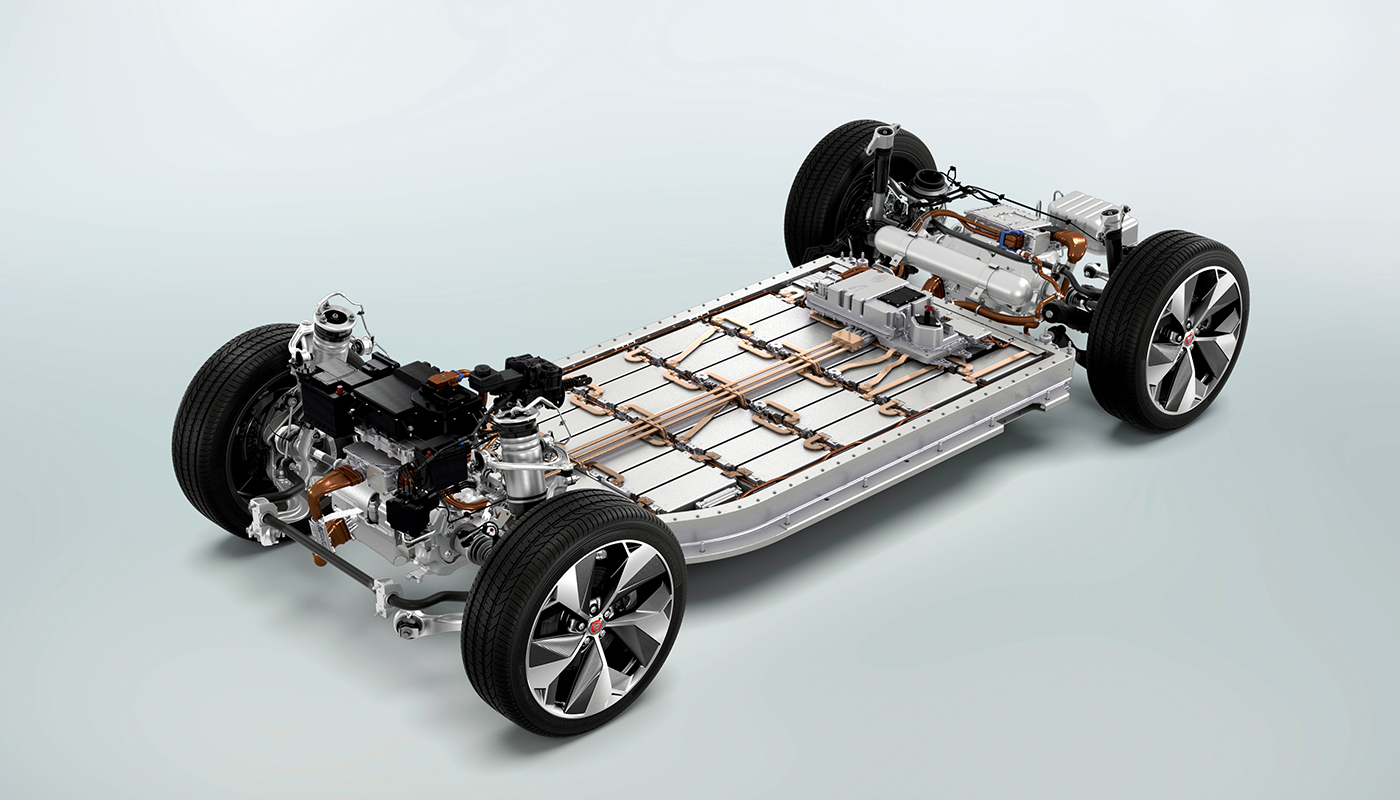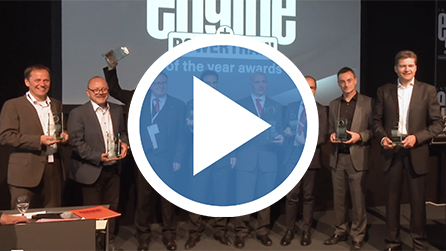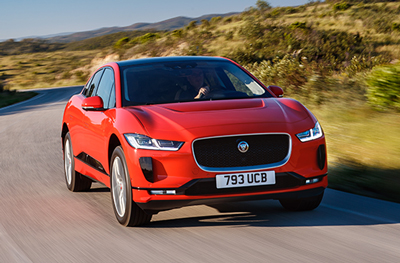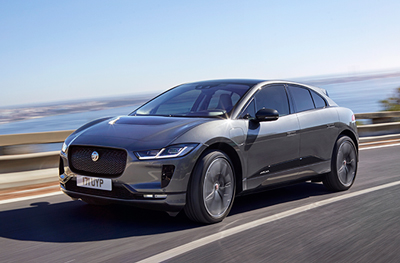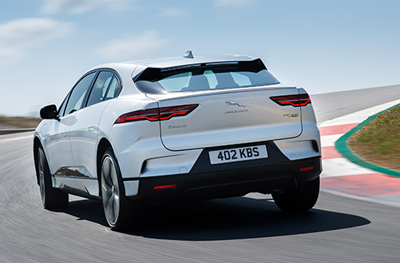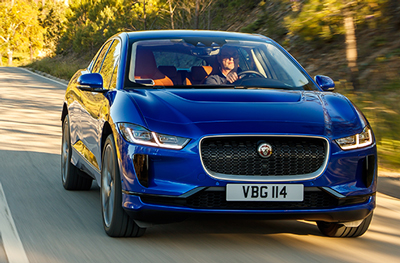
Covid-19 impact
Due to the Covid-19 virus, we are reviewing when we hold the Awards next year.
Check this website for updates.
Best New Engine
Results
| ENGINE | POINTS |
|---|---|
| WINNER! - Jaguar Land Rover full-electric powertrain (Jaguar I-Pace) |
281 |
| Hyundai-Kia full-electric powertrain (Hyundai Kona, Kia Soul EV) |
174 |
| Audi / Lamborghini 4-litre V8 (Lamborghini Urus) |
170 |
| Nissan / Infiniti 2-litre VC-Turbo (Infiniti QX50) |
164 |
| Mercedes-AMG 2-litre turbo (Mercedes-AMG A35) |
151 |
| Ford 1.5-litre three-cylinder turbo (Ford Fiesta ST) |
137 |
Winner's Video
Winner's Interview
Cars
❝ Jaguar’s first-ever electric car is an amazingly polished performer with eco-cred to equal anything wearing a Tesla badge ❞
John Carey, Wheels
Review
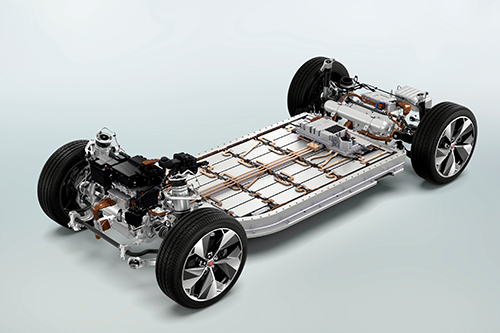
Technical Specification
Jaguar I-Pace
- electric motors: Two synchronous permanent magnet electric motors
- power output: 400PS
- torque output: 696Nm
- range: 470km (292 miles)
This year’s winner of the New Engine award sees a symbolic handing of the torch to electrification as the motoring community collectively nods in agreement that the powertrain technology has come of age.
For years, we’ve been waiting for a BEV to make a bid for Tesla’s crown, and Jaguar’s first foray into full electric power with the I-Pace is an outstanding application worthy of taking top honours.
JLR’s I-Pace was more than 100 points ahead of its nearest challenger, another full-electric powertrain – the two EV engines leaving ICEs in their emission-less wake, a clear sign of the times.
Jaguar has taken full advantage of the maturation of electric power technology to build its powertrain from scratch. Developed from engineering research gleaned from work on its Formula E racing car, a high energy density lithium-ion 90kW battery powers two axle-mounted independent electric motors that, combined, produce a total of 400PS and 696Nm of torque.
Making these numbers even more impressive is the 470km (292 miles) of range on the WLTP cycle and a thrilling 0-100km/h time of just 4.8 seconds (0-60mph in 4.5 seconds). As Awards judge Nikos Kounitis notes, the I-Pace’s performance “could easily convince even the biggest sceptics that an electric powertrain can be really fun to drive”.
The I-Pace’s highly lauded handling is due to the fact the two synchronous permanent magnet electric motors have been engineered to minimise weight and have a compact footprint, which means they can be positioned lower in the vehicle for a low centre of gravity, with the battery itself installed low between the axles.
It’s not often a vehicle comes along that’s truly class-defining but Jaguar’s I-Pace – the first BEV from a premium OEM – blows away any remaining reservations regarding full electric ownership and is leading the charge as manufacturers embrace the future of motoring. Motor Trend’s Angus MacKenzie describes it perfectly, as “a game changer”.
For years, we’ve been waiting for a BEV to make a bid for Tesla’s crown, and Jaguar’s first foray into full electric power with the I-Pace is an outstanding application worthy of taking top honours.
JLR’s I-Pace was more than 100 points ahead of its nearest challenger, another full-electric powertrain – the two EV engines leaving ICEs in their emission-less wake, a clear sign of the times.
Jaguar has taken full advantage of the maturation of electric power technology to build its powertrain from scratch. Developed from engineering research gleaned from work on its Formula E racing car, a high energy density lithium-ion 90kW battery powers two axle-mounted independent electric motors that, combined, produce a total of 400PS and 696Nm of torque.
Making these numbers even more impressive is the 470km (292 miles) of range on the WLTP cycle and a thrilling 0-100km/h time of just 4.8 seconds (0-60mph in 4.5 seconds). As Awards judge Nikos Kounitis notes, the I-Pace’s performance “could easily convince even the biggest sceptics that an electric powertrain can be really fun to drive”.
The I-Pace’s highly lauded handling is due to the fact the two synchronous permanent magnet electric motors have been engineered to minimise weight and have a compact footprint, which means they can be positioned lower in the vehicle for a low centre of gravity, with the battery itself installed low between the axles.
It’s not often a vehicle comes along that’s truly class-defining but Jaguar’s I-Pace – the first BEV from a premium OEM – blows away any remaining reservations regarding full electric ownership and is leading the charge as manufacturers embrace the future of motoring. Motor Trend’s Angus MacKenzie describes it perfectly, as “a game changer”.
